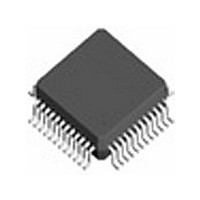ICS8530DY IDT, Integrated Device Technology Inc, ICS8530DY Datasheet - Page 10

ICS8530DY
Manufacturer Part Number
ICS8530DY
Description
Manufacturer
IDT, Integrated Device Technology Inc
Datasheet
1.ICS8530DY.pdf
(16 pages)
Specifications of ICS8530DY
Number Of Outputs
32
Operating Supply Voltage (max)
3.465V
Operating Temp Range
0C to 70C
Propagation Delay Time
2ns
Operating Supply Voltage (min)
3.135V
Mounting
Surface Mount
Pin Count
48
Operating Supply Voltage (typ)
3.3V
Package Type
LQFP
Duty Cycle
53%
Operating Temperature Classification
Commercial
Lead Free Status / Rohs Status
Not Compliant
Available stocks
Company
Part Number
Manufacturer
Quantity
Price
Company:
Part Number:
ICS8530DY-01LF
Manufacturer:
IDT, Integrated Device Technology Inc
Quantity:
10 000
Company:
Part Number:
ICS8530DY-01LFT
Manufacturer:
IDT, Integrated Device Technology Inc
Quantity:
10 000
Part Number:
ICS8530DY-01LFT
Manufacturer:
ICS
Quantity:
20 000
Company:
Part Number:
ICS8530DYI-01LF
Manufacturer:
IDT, Integrated Device Technology Inc
Quantity:
10 000
Company:
Part Number:
ICS8530DYI-01LFT
Manufacturer:
IDT, Integrated Device Technology Inc
Quantity:
10 000
Company:
Part Number:
ICS8530DYLF
Manufacturer:
IDT, Integrated Device Technology Inc
Quantity:
10 000
ICS8530 Data Sheet
ICS8530DY REVISION E SEPTEMBER 15, 2010
Power Considerations
This section provides information on power dissipation and junction temperature for the ICS8530.
Equations and example calculations are also provided.
1.
The total power dissipation for the ICS8530 is the sum of the core power plus the power dissipated in the load(s).
The following is the power dissipation for V
NOTE: Please refer to Section 3 for details on calculating power dissipated in the load.
Total Power_
2. Junction Temperature.
Junction temperature, Tj, is the temperature at the junction of the bond wire and bond pad and it directly affects the reliability of the device.
The maximum recommended junction temperature is 125°C. Limiting the internal transistor junction temperature, Tj, to 125°C ensures that the
bond wire and bond pad temperature remains below 125°C.
In order to calculate junction temperature, the appropriate junction-to-ambient thermal resistance θ
flow of 200 linear feet per minute and a multi-layer board, the appropriate value is 42.1°C/W per Table 6 below.
Therefore, Tj for an ambient temperature of 70°C with all outputs switching is:
This calculation is only an example. Tj will obviously vary depending on the number of loaded outputs, supply voltage, air flow and the type of
board (multi-layer).
Table 6. Thermal Resistance
Linear Feet per Minute
Single-Layer PCB, JEDEC Standard Test Boards
Multi-Layer PCB, JEDEC Standard Test Boards
NOTE: Most modern PCB designs use multi-layered boards. The data in the second row pertains to most designs.
Power Dissipation.
•
•
Power (core)
Power (outputs)
If all outputs are loaded, the total power is 16 * 35mW = 560mW
The equation for Tj is as follows: Tj = θ
Tj = Junction Temperature
θ
Pd_total = Total Device Power Dissipation (example calculation is in section 1 above)
T
70°C + 0.958W * 42.1°C/W = 110.3°C. This is below the limit of 125°C.
JA
A
= Ambient Temperature
= Junction-to-Ambient Thermal Resistance
MAX
(3.465V, with all outputs switching) = 398.5mW + 560mW = 958mW
MAX
MAX
= V
= 35mW/Loaded Output pair
CC_MAX
θ
JA
* I
for 48 Lead LQFP, Forced Convection
EE_MAX
CC
= 3.3V + 5% = 3.465V, which gives worst case results.
JA
= 3.465V * 115mA = 398.5mW
* Pd_total + T
θ
JA
A
67.8°C/W
47.9°C/W
by Velocity
10
0
LOW SKEW, 1-TO-16, DIFFERENTIAL-TO-2.5V LVPECL FANOUT BUFFER
55.9°C/W
42.1°C/W
200
JA
must be used. Assuming a moderate air
©2010 Integrated Device Technology, Inc.
50.1°C/W
39.4°C/W
500
















